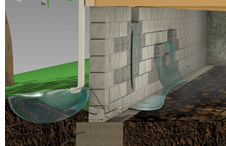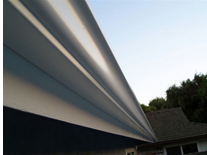Humidity, mold growth in corners and standing water on the floor are all signs that water may be seeping through your basement walls. There are many possible causes for a leaking basement, so as soon as you suspect a problem, it’s time to find out where that water is coming from. And checking your gutters is a good place to start.
Leaf blockage
As summer winds down, leaves begin to fall from trees, and they often end up in gutters. Leaves can accumulate and reduce the capacity of your gutters or cause clogs, which can force water out of the top of gutters before it reaches downspouts. That water is then absorbed by the earth surrounding your home, and it may end up leaking into your basement. Its important to keep gutters clean – if you have a lot of trees near your home, you might want to install a gutter guard that catches leaves and other debris.
Ice dams

Dont try to chip at ice dams – you could damage your gutters or slip and fall. Instead, you can fill nylon stockings with ice melt and toss it onto ice dams to slowly melt the blockage. And make sure your attic is well insulated before the first snowfall.
Preventing excess moisture in the basement begins at your roofline, so take good care of your gutters. And if you determine that your gutters aren’t the source of water in your basement, arrange for a foundation repair professional to inspect your property and determine what’s causing the problem.



Leave a comment: